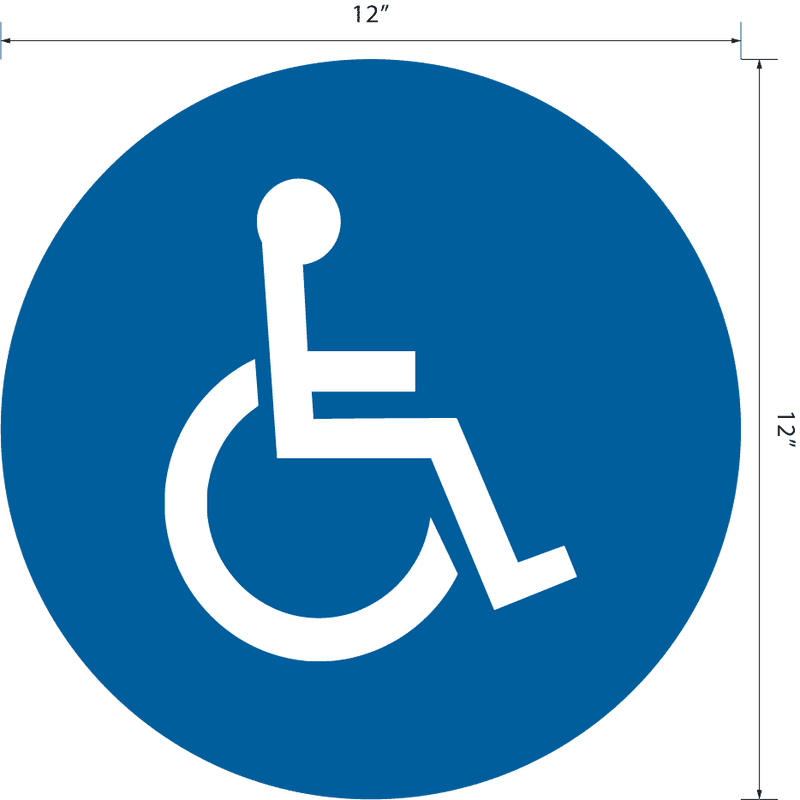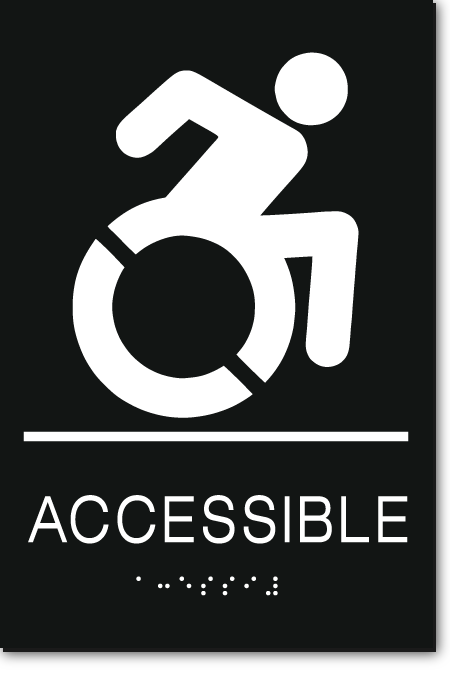The Impact of ADA Signs on Neighborhood Access
The Impact of ADA Signs on Neighborhood Access
Blog Article
Recognizing the Relevance of ADA Signs for Inclusive Environments
In a progressively diverse society, the significance of ADA signage can not be overemphasized. By incorporating functions like tactile characters and high-contrast visuals, ADA signs plays an essential role in guaranteeing equivalent gain access to for individuals with impairments.
The Role of ADA Signage
ADA signs plays a crucial role in ensuring accessibility and inclusivity in public and private spaces. These indications are essential in leading individuals with impairments, offering them with the necessary information to navigate environments independently and securely. The Americans with Disabilities Act (ADA) establishes forth particular guidelines for signs to make certain that individuals with aesthetic, auditory, or cognitive disabilities can access the exact same info as those without such obstacles.
The function of ADA signs extends beyond simple compliance with legal needs; it symbolizes a dedication to equal rights and non-discrimination. By implementing ADA-compliant indicators, services and establishments show their dedication to developing environments where everyone, despite their physical capacities, can participate fully and similarly. This is particularly critical in rooms like hospitals, universities, and federal government buildings, where access can straight affect a person's well-being and capability to access important solutions.
Moreover, ADA signage adds to the overall customer experience by lowering confusion and enhancing wayfinding for all people. Clear, strategically put signs assists in taking care of foot traffic, reducing blockage, and improving security. Basically, ADA signs is a foundation of comprehensive style, promoting an atmosphere where all people can browse and communicate with their environments effectively.
Key Parts of ADA Signs
Reliable communication is at the heart of ADA signage, which includes numerous vital parts to guarantee accessibility for people with specials needs. One of the primary aspects is making use of tactile characters, such as Braille and increased letters, which enable people with visual problems to read the signs with touch. The Braille should be Quality 2 and positioned directly below the matching message.

Another important element is the mounting location and elevation of the signs. ADA policies define that indications should be set up at an elevation that is accessible to all individuals, commonly between 48 and 60 inches from the floor. This makes certain that they are available for people in wheelchairs or of differing elevations.
Advantages for Businesses and individuals
While making certain ease of access via ADA signage is a legal demand, it additionally uses substantial benefits for both individuals and services. For people, specifically those with specials needs, ADA signage supplies critical ease of access to public spaces.
For services, the implementation of ADA signs can cause enhanced client fulfillment and commitment. By showing a commitment to accessibility, organizations can draw in a more comprehensive client base, consisting of individuals with handicaps and their households, who often look for inclusive environments. Furthermore, ADA compliance can protect businesses from possible legal obstacles and charges related to non-compliance, guarding their reputation and economic stability.
Moreover, ADA signs can add to a positive workplace environment. Staff members with disabilities take advantage of easily accessible navigation within their work spaces, promoting productivity and spirits (ADA Signs). Eventually, purchasing ADA signage not just satisfies legal responsibilities however also boosts the inclusivity, track record, and functional success of companies
Common Kinds Of ADA Signage
When discussing the numerous forms of ADA signage, it is essential to comprehend the specific types that deal with various access requirements. ADA signs is designed to ensure that individuals with specials needs can navigate areas safely and independently. A key category consists of tactile indications, which feature raised characters and Braille. These indicators are important for aesthetically damaged people, allowing them to recognize rooms, leaves, toilets, and other crucial locations.
An additional substantial kind of ADA signs is directional indicators. These offer clear advice to various places within a center, guaranteeing that all individuals, consisting of those with flexibility impairments, can easily find their method - ADA Signs. They often incorporate icons and high-contrast colors to improve visibility and comprehension
Informative indications are likewise crucial, supplying essential information concerning centers, such as operating hours and plan guidelines. redirected here Furthermore, governing indications convey compulsory directions, like "No Cigarette smoking" or "Departure Path," making sure conformity with safety and security protocols.
Last but not least, identification indicators are made use of to label spaces and rooms, making it much easier for everybody, despite ability, to identify details areas. These signs usually consist of pictograms to enhance global understanding. Jointly, these common sorts of ADA signage play a crucial duty in creating inclusive and accessible settings.

Executing Efficient Signs Solutions
Applying efficient signage options requires a critical approach to ensure access and compliance with the ADA criteria. The process starts with a complete evaluation of the center to determine the specific signs needs based upon the atmosphere's feature, design, and the populace it offers. This evaluation needs to include considerations for both irreversible and momentary signage, each requiring distinctive design and placement approaches.
Signs must be made from resilient more info here materials to withstand environmental factors while making certain high visibility and readability. The integration of Braille and increased characters need to stick to ADA requirements to give equivalent accessibility.
Regular testimonial and maintenance of signage ensure ongoing compliance and performance. Engaging with ease of access specialists during the preparation and application phases can provide valuable insights, guaranteeing that signage not only meets lawful needs but likewise improves the inclusivity of the atmosphere.

Conclusion
ADA signs plays a pivotal duty in creating comprehensive environments by ensuring conformity with accessibility guidelines and improving navigation for all individuals. By promoting more secure and a lot more welcoming areas, ADA signage underscores a commitment to inclusivity, ultimately contributing to a much more equitable culture for every person.
By incorporating features like responsive personalities and high-contrast visuals, ADA signage plays an essential duty in making sure equivalent accessibility for people with impairments. The Americans with Disabilities Act (ADA) establishes forth details guidelines for signage to make certain that people with aesthetic, auditory, or cognitive problems can access the same details as those without such challenges.
Effective communication that site is at the heart of ADA signage, which incorporates numerous key parts to guarantee availability for individuals with impairments.While making sure access through ADA signage is a legal requirement, it also provides significant advantages for both people and organizations. ADA signage is developed to make sure that individuals with specials needs can navigate spaces safely and independently.
Report this page